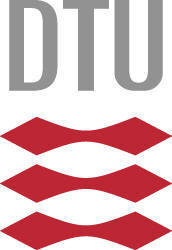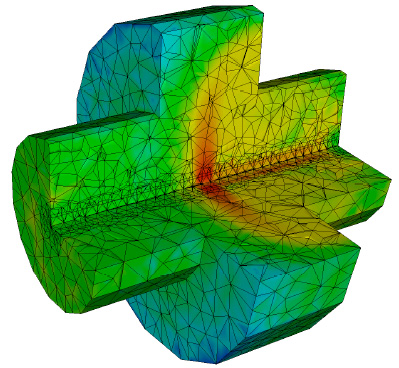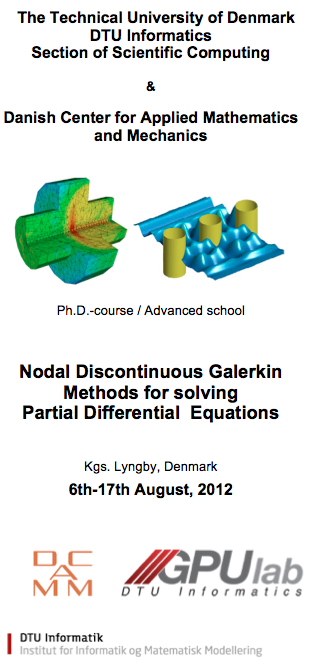The full course description of the course with learning objectives can be found here [LINK]
The listed topics will be covered in the course and the following book will be used
 | J.S. Hesthaven and T. Warburton, 2008,
Nodal Discontinuous Galerkin Methods: Algorithms, Analysis, and Applications.
Springer Texts in Applied Mathematics 54, Springer Verlag, New York. XIV+500 pages. Book webpage. Note: the book will be available in the campus bookshop Polyteknisk Boghandel around the start of the course. |
1. Introduction.
Overview of methods for solving partial differential equations and basic introduction to discontinuous Galerkin methods (DG-FEM).
2. DG-FEM in one spatial dimension.
In depth discussion of DG-FEM in 1D for linear problems, numerical fluxes, stability, and basic theoretical results on accuracy.
3. Implementation and numerical aspects
Introduction to appropriate implementations, choices to ensure robust behavior, time-stepping and time-step control, etc.
4. Nonlinear problems
Conservation laws, theoretical aspects for nonlinear problems, filtering and limiting for problems with shocks.
5. Extension to two-dimensions
Extension to simplex based schemes and illustration for general applications.
6. Grid generation
Introduction to basic Matlab based grid generation.
7. Higher-order operators
Extension of DG-FEM to problems with higher spatial derivatives such as Poisson's equation and the incompressible Navier-Stokes equation.
8. Three-dimensional problems and other advanced topics.
Extension to three-dimensional problems. Overview of optional advanced topics such as software packages and GPU accelerated DG-FEM computation.







